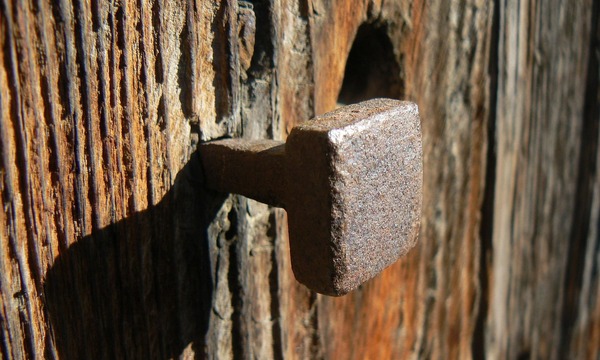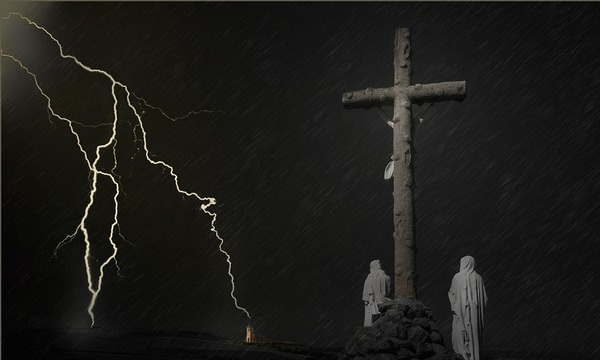When I first started to learn how to pray on my own, I thought that I had to kneel when I prayed. Most of the people I had read about who were pray-ers were also kneel-ers. For example, a second-century Christian named Hegesippus records that James, the half-brother of Jesus, “was frequently found situated upon his knees asking forgiveness for the people, so that his knees became hard after the manner of a camel, on account of always bending down upon a knee while worshipping God and asking forgiveness for the people.”[1] As a young man, I so wanted to have camel knees!
But when I tried it, I kept falling asleep while kneeling next to my bed. (I had no idea it was possible to fall asleep on my knees! My grandson might say that that was my superpower.)
I tried standing, pacing around my room, and sitting on a comfortable chair with my hands turned upward. It took two years from the time I committed myself to develop a personal prayer life to find a prayer posture that really worked for me. The breakthrough came when I learned that my beloved teacher, David Needham, took daily prayer walks. “What? You can walk and pray at the same time?” I decided to try it and, as a result of his example, have been prayer-walking for the past four decades.
But walking and trying to pray is not going to work well for many people, especially for people who get easily distracted by things they see.
So let me list out other prayer postures you might try that I’ve found in the Bible, since there is such a variety in the Bible itself, with the goal of helping you grow in your times of prayer.
- Standing. Hannah stood while she prayed for God to give her a child (1 Sam 1:26). Jesus prayed while standing before the tomb of Lazarus just before raising him from the dead (John 11:41). Psalm 4:4 says that we should, “Stand in awe.” In one parable of Jesus, both characters are standing for prayer in the temple (Luke 18:10-14). In 2 Chronicles 20:13 it says that the whole congregation of Israel stood before the Lord.
- Lifting or stretching out one’s hands. 1 Timothy 2:8 encourages, “I desire then that in every place the men should pray, lifting holy hands.” Psalm 141:2 reads, “Let my prayer be counted as incense before you, and the lifting up of my hands as the evening sacrifice!” (Cf. Exod 9:29)
- Lifting eyes upward. Now, in certain situations it’s a good idea to close your eyes in prayer to keep from being distracted by the things around you. But frequently in the Bible, people lift their open eyes upward. Psalm 121:1 says, “I lift up my eyes to the hills. From where does my help come? My help comes from the LORD, who made heaven and earth.” Jesus himself frequently lifted his eyes upward in prayer (Mark 6:41; Luke 9:16; John 11:41; 17:1).
- Sitting. “Then King David went in and sat before the LORD and said, ‘Who am I, O Lord GOD, and what is my house, that you have brought me thus far?’” (2 Sam 7:18). In a moment of corporate grief, Judges 20:26-27 records, “Then all the people of Israel, the whole army, went up and came to Bethel and wept. They sat there before the LORD and fasted that day until evening…. And the people of Israel inquired of the LORD.”
- Lying on your bed. Psalm 4:4 instructs us to “ponder in your own hearts on your beds.” Psalm 63:6 says, “when I remember you upon my bed, and meditate on you in the watches of the night.” I don’t recommend, however, that this is the only prayer posture you use, since you can easily fall asleep while lying down, and this position won’t remind you of the majesty of God as well as some of the other postures.
- Being still and silent. This isn’t a bodily posture, per se. But stillness is a cessation of bodily movement, as is closing one’s mouth. Psalm 46:10 famously commands, “Be still and know that I am God.” Habakkuk 2:20 boldly declares, “But the LORD is in his holy temple; let all the earth keep silence before him.” (Cf. Zech 2:13)
- Bowing. This approach to prayer is not as popular among western Christians (maybe because they’ve seen videos of Muslims bowing in prayer?—or maybe because we’re lazy?), but it’s common in Scripture. Moses (Exod 34:8), Elijah (1 Kings 18:42), Among others, Jehoshaphat (2 Chron 20:18), and a congregation of people under the leadership of Ezra (Neh 8:6) all bowed to the Lord. Psalm 5:7 says, “I will bow down toward your holy temple in the fear of you.”
- Prostrate on your face. This prayer posture overlaps with bowing, and sometimes in the Bible may be one-and-the-same. But sometimes people fall flat out on their faces in reverence before the Lord. Examples include Abraham (Gen 17:3), Joshua (Josh 7:6), John (Rev 1:17), and Jesus himself (Matt 26:39). Even the angels take a prostrate position in reverence before God (Rev 5:8, 14).
- Writing. We know about the prayer posture of writing because of all the prayers that are recorded in the Bible, especially in the Book of Psalms. Writing is my wife, Trudi’s, favorite prayer posture, since it keeps her focused. She has filled dozens of journals with prayers. (We’re even having trouble finding places to store all her books of prayers!)
- Kneeling. It’s not just camel-knee’d James who knelt in prayer. Kneeling for prayer is all over the Bible. See, for example, 2 Chron 6:13; Ezra 9:5, Psalm 95:6, Daniel 6:10, Luke 22:41-42; Acts 9:40; 20:36, Eph 3:14.
- Walking. In a little-known verse in Acts, Paul separates from his seven traveling companions who are on a ship and walks on his own from Troas to Assos (about 30 miles of walking) before meeting up with the ship again. Why did he do this? I’m thinking it was to pray before heading to Jerusalem where he was sure to face opposition and maybe even imprisonment (Acts 20:13-14). Philip walked, then even ran(!) while talking to the Lord leading up to him joining the chariot of the Ethiopian eunuch in the desert (Acts 8:26-30).
With such a variety of prayer postures in the Bible, I think we should assume that taking one particular posture for prayer is not the main issue in prayer. The primary issue is that you actually talk to the Lord when you pray. Do be aware, though, that certain postures lend themselves more readily to certain types of praying; for example, lying prostrate on your face seems more appropriate for repentance than lying on your bed. But try to find a mix of prayer postures that best allow you to pray.
Outside of Scriptural examples, I have known people who pray while shooting baskets, taking long runs, or exercising in some way. I had one student who told me that he prayed best while floating on his surfboard while waiting to catch the next wave. I recently had a really good time of prayer on a bike ride.
Whatever you do, find a way to pray! Pray—and whatever you do, as Jesus said in Luke 18:1, don’t give up praying.
Notes
[1] Hegesippus’s comment about James was transmitted by Eusebius in his Ecclesiastical History 2.23.6.
This post and other resources are available at Kindle Afresh: The Blog and Website of Kenneth Berding.
 Biola University
Biola University.jpg)



.jpg)
